
All categories
Featured selections
Trade Assurance
Buyer Central
Help Center
Get the app
Become a supplier

(927 products available)

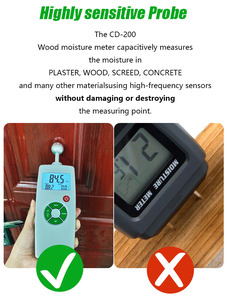
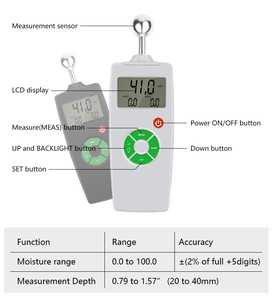

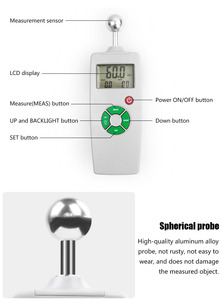



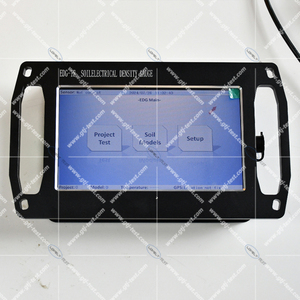


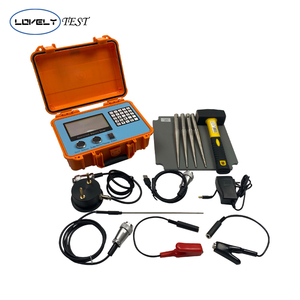











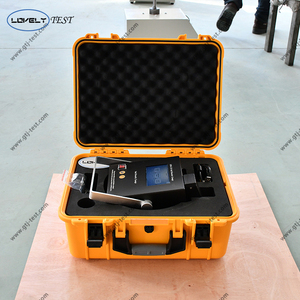



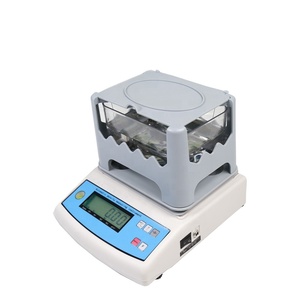
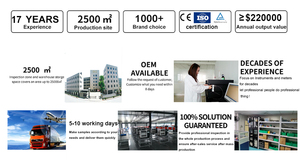


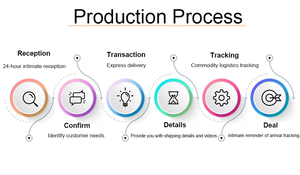








Aggregate density testers come in various models. The right kind depends on the purpose and the conditions in which they will be used. Here are the most common types available in the market:
This apparatus has a density measuring device fitted with a master cone. It gets all the information needed about the density of concrete aggregate materials. Normal concrete has a fixed density because it is made with water, cement, and other aggregates. This tester helps construction companies understand if the concrete mix they plan to use meets the required density standards for a given project.
This tool measures concrete aggregate density very fast. It uses water to give results quicker than older ways. Companies like it because it works well, even in cold weather when the concrete might freeze. Also, the gadget uses less water than some other tests. This makes the test site easier to clean. It gives a fast and accurate check of the density of aggregates used in making concrete.
This kit makes measuring the density and volume of aggregates easier. The equipment stores and checks important liquids. It uses these fluids to find out what density an aggregate has, which helps companies choose the right materials. The kit works for all aggregate types, from fine sand to big stones. It is also portable, so it could be used at different work locations or moved to a lab.
The water displacement part makes it special compared to other density checkers. This part gives very clear results, helpful for projects that need exact numbers. Plus, the kit helps meet green rules, as it uses less water than older devices. This may help cut down costs.
The gyratory compacting aggregate density tester helps check how compact concrete mixtures are. It has a drum that spins the compound to compact it evenly. This gives a good look at how the mixture will perform when used. It also helps save money as it needs less of the actual material to do the tests.
The dense-LW Aggregate Density Tester stands out as a helpful tool. It uses clear resin to check concrete's density and how it blocks radiation. Trainers like it since the test works faster with less material than older methods. Its unique system helps ensure concrete is dense and does a good job of blocking radiation.
The main part of the aggregate concrete density test kit is checking the density of the aggregates in concrete. The kit should work quickly and without much fuss. It needs to give clear density results so builders know if they have the right mix. The more accurate the results, the better they can plan the next steps. A good kit repeats tests with the same solid results. This is essential for big jobs where there is no room for error. Also, it helps labs check that their work follows set rules.
Check these aspects to make sure the equipment can perform well and get the work done right. One example of an aggregate density tester is a concrete aggregate density test kit.
The design of the aggregate density tester is essential in various projects. It affects how simple the tool is to use and if it can hold up in heavy work settings. The design also impacts how easy it will be to clean and take care of the tester. When tests finish, it should be simple to wipe the device or change any broken parts. Good designs keep testers in shape for longer, which saves users money over time. Often, these materials are less likely to rust or corrode if damaged by water or other liquids. Job sites often have rough conditions, so using stronger materials is better in these cases.
How a tester looks and feels also affects how easily it can be stored. Smaller, foldable testers fit better in tight storage spaces. Big models take up more room but sometimes have more power.
Concrete aggregate bulk density test equipment plays an important part in many jobs. It helps people in many fields work well and get the best results. Below are some of the main areas where these testers make a difference:
Density testers check wet concrete at plants before it is shipped. This ensures each batch has the same density. When the density is steady, it shows the mix is correct. This helps avoid putting out bad concrete that has the wrong amounts of sand, stone, and cement. It also keeps the concrete from packing down too much during shipping. Less packing leads to better concrete when it is poured.
Density testers help crews check asphalt and concrete for roads. This lets them spot any problems before the work is finished. If the mix is too dense or not dense enough, they can fix it right away. This keeps the road from cracking or having holes later on. The mix will last longer if it has the right density when it is put down. This also keeps the road from getting rough or having to be replaced early.
Density testers help check concrete for buildings and bridges. This keeps the concrete strong and safe. If the mix is too dense or not dense enough, workers can adjust it right away. A well-balanced mix makes the structure last longer. It also keeps the concrete from cracking or breaking over time. Less dense concrete means more air pockets, which could cause the structure to weaken.
Concrete aggregate density testers help dam workers check their concrete. This keeps the dam safe and in good shape. If the mix is off, workers can fix it before the dam is done. It also keeps the dam from leaking or having holes. The right density makes the dam stronger and better able to hold back water. This helps protect homes and towns downstream.
Density testers help workers fix old buildings and bridges. This keeps the repairs strong and safe. If the mix is off, they can adjust it before doing too much work. This saves time and money on repairs. The tester checks for air pockets or spaces that could weaken the repairs. It also helps workers pick the best materials for the job. Good density makes the repair last longer and help the old structure hold more weight.
Each part of the aggregate density tester needs care to perform as intended. Some parts wear down faster than others. Give them closer looks more often. Here are the key parts and the maintenance tips:
The main part that holds the entire tester. Clean the top where the load is taken. This stops dust from building up and keeps strain transducers from getting damaged.
The sensors that measure the force. Take off the load and look for cracks or damage. If broken, get it fixed before the next test. Don't try to run the tester with damaged sensors.
The part that records the weight. Run a calibration check monthly using standard weights. Look for big changes in the numbers. This means the load cell needs to be recalibrated or replaced.
This controls different settings on the tester. Spray it every few months to keep it working. Use oil for a smooth feel. Avoid using oils that collect dust. This could break the switch.
This raises the load on the tester. Check the oil level every two weeks. Low oil makes the pump work harder, and this causes part damage. Clean the tank and pump monthly. This prevents dirt from stopping the oil flow.
These connect the pump to the tester. Check hoses weekly for cracks or holes. If broken, fix it right away. Running with damaged hoses can harm the pump and the tester.
This seals the oil inside. Change it every few years. Old caps can cause oil leaks. Make sure the seal is in good shape. Don't run the tester without a cap. Dust and dirt can get in and contaminate the oil.
This removes dirt from the oil. Change it every six months. A dirty filter makes the tester slow. It also means the motor and pump can get damaged. Install new filters regularly. This keeps the oil clean and extends the life of other parts.
A1. Common parts include metals like steel, aluminum, and brass. These materials last a long time and resist rust. Plastic parts also help reduce costs. They weigh less and can break if damaged. Internal parts like gears and sensors often use brass. It conducts electricity and is easy to shape.
A2. Suppliers offer aggregate density testers to buyers in bulk. Large orders are for businesses like construction firms, road makers, or concrete companies. Some testers give quick results. Others focus on precise density numbers. Kits that use less water are good for sites with few resources. More portable testers make the task simple on multiple job sites. Density balls make readings clear, which large projects demand.
A3. Keep the tester in a clean, dry space away from direct sunlight. This stops rust and keeps parts in good shape. Store it at a steady temperature to avoid breaking due to sudden heat or cold. Also, keep it safe from dust, which can harm delicate parts. Make sure dampness does not reach the tester. It may cause internal damage or rust.
A4. Wipe the tester down after each use to remove dust and debris. Check parts often for any signs of wear or rust. Lubricate moving parts regularly to keep them in good shape. This may make them last longer. Cover the tester when not in use to protect it from particles. Store it inside to keep it dry and away from bad weather. Change worn parts to keep the tester working well.
A5. Also, avoid using the tester in extreme conditions to keep it strong. Heat, cold, or wet can harm it and shorten its life. Use it carefully and within its limits. Don't overload or push the tester too hard. Usually, avoid hitting the tester against hard surfaces. This may cause dents and damage internal parts.